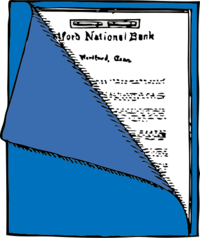Text-based data
From Just Solve the File Format Problem
(Difference between revisions)
(No longer considering this page to be for miscellaneous formats) |
(→Text formats and resources) |
||
| Line 19: | Line 19: | ||
** [[JSON Table Schema]] | ** [[JSON Table Schema]] | ||
* [[Microsoft Office File List]] (filelist.xml) | * [[Microsoft Office File List]] (filelist.xml) | ||
| + | * [[NestedText]] [https://nestedtext.org/en/stable/] | ||
* [[Org-mode]] | * [[Org-mode]] | ||
* [[Softdisk Publishing UDF files]] | * [[Softdisk Publishing UDF files]] | ||
Latest revision as of 17:24, 9 October 2020
Contents |
[edit] Introduction
Text based data, AKA plain text. has proven to be very hard to understand. This has not only to do with the infinite ways text based data might be structured, but mainly because you need to know the encoding (eg. UTF-8) before you can start interpreting it.
[edit] Text formats and resources
- AsciiDoc
- Attribute-Relation File Format
- Column Delimited
- CSV (Comma Separated Values; comma-delimited)
- Microsoft Office File List (filelist.xml)
- NestedText [1]
- Org-mode
- Softdisk Publishing UDF files
- Strings File (OS X, iOS) (.strings)
- Tab delimited
- Text Encoding Initiative
- Textile
[edit] See Also
- Plain text
- Some text-based formats are listed in Document, Markup, Metaformats, or Serialization
